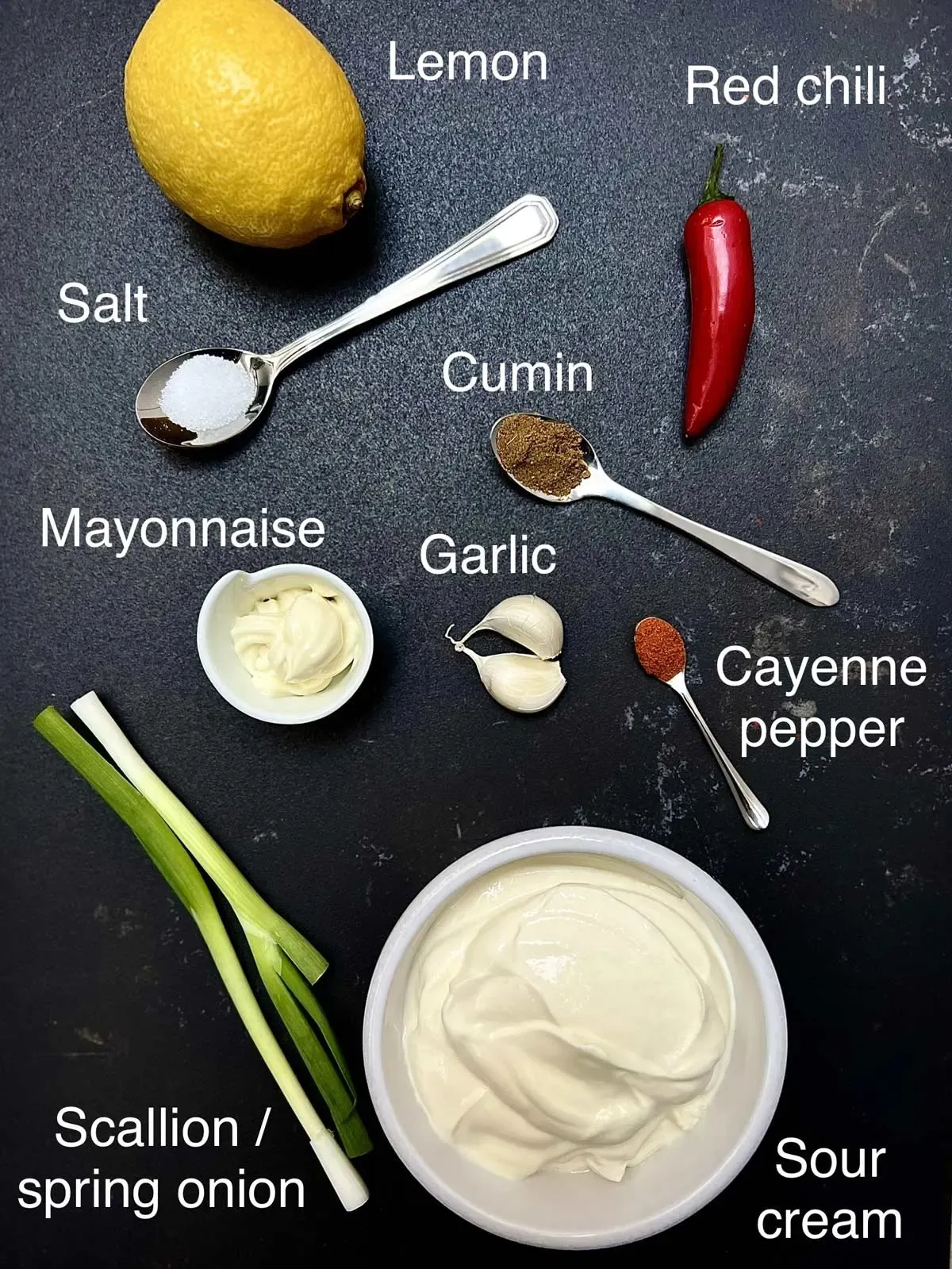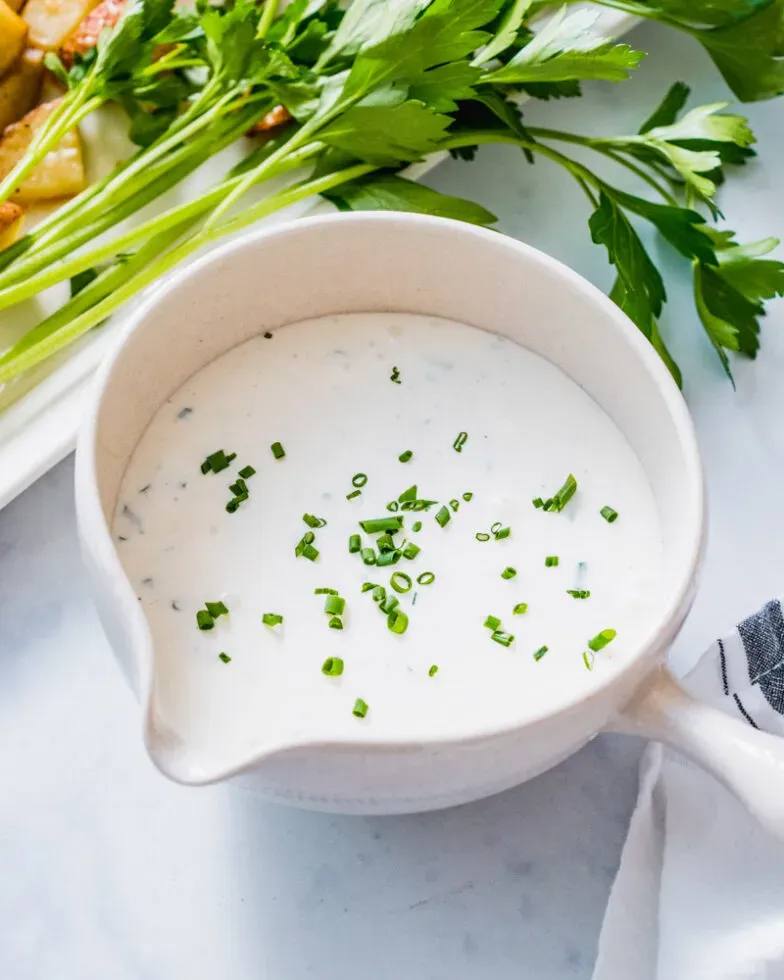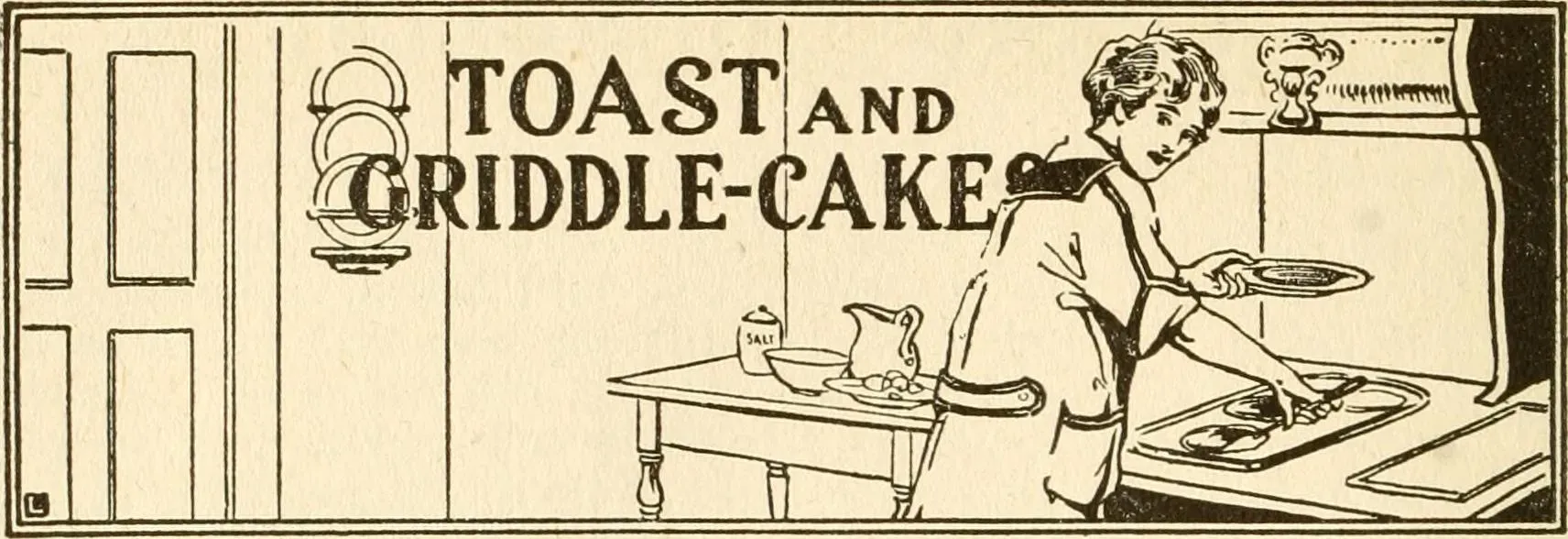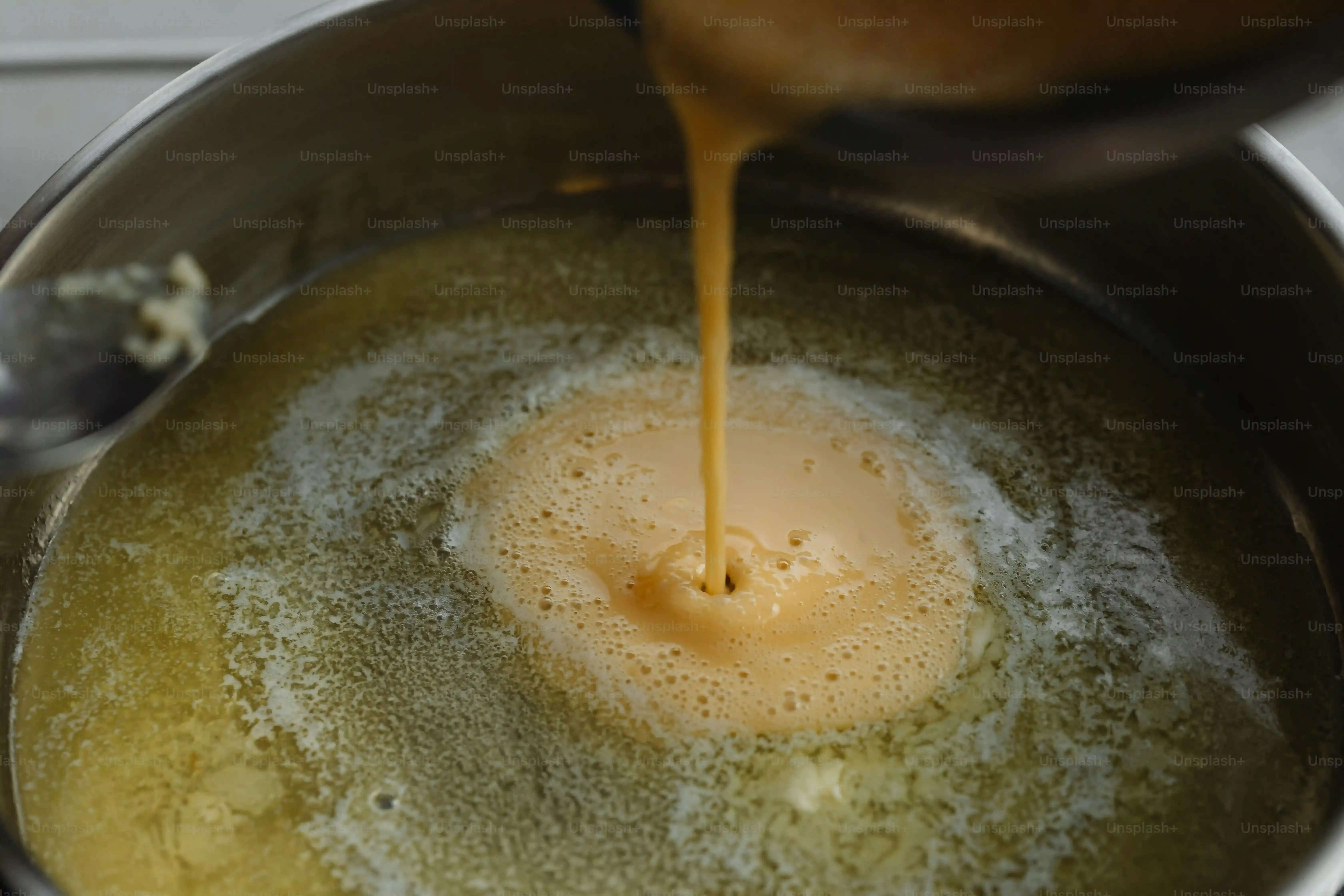Table of Contents
Ever find yourself staring at a plate of perfectly good tacos, baked potatoes, or chicken, thinking, "This needs... something"? You know the feeling. That something is often a creamy, tangy sauce to pull it all together. Skip the sad, store-bought versions loaded with weird stuff you can't pronounce. Learning how to make a sour cream sauce at home is ridiculously easy, surprisingly versatile, and frankly, tastes a whole lot better.
Why Bother Making Sour Cream Sauce? (It's Not Just for Tacos)

Why Bother Making Sour Cream Sauce? (It's Not Just for Tacos)
Skip the Mystery Ingredients
Let's be real. You grab a tub of store-bought sauce, flip it over, and the ingredient list reads like a chemistry textbook. Stabilizers, preservatives, artificial flavors – who needs that? Learning how to make a sour cream sauce means you control exactly what goes in. Sour cream, maybe a little lemon juice, some salt, pepper, and whatever fresh herbs or spices you like. It's simple, clean, and you know what you're eating. Plus, it takes about five minutes, maybe ten if you're really dragging your feet.
Flavor Control is King
Restaurant sauces often hit different because they're made fresh and tailored to the dish. When you make your own sour cream sauce, you get that same power. Want it tangier? Add more lemon juice or a splash of vinegar. Need a kick? Stir in some cayenne or hot sauce. Craving garlic? Fresh minced garlic is your friend, not that powdered stuff that tastes like sadness. This level of customization is impossible with pre-made tubs, which are usually bland and one-note.
Think about it: you can adjust the thickness, the acidity, the spice level, the herb profile. It’s your sauce, your rules.
- Control ingredients, avoid additives.
- Adjust tanginess with lemon or vinegar.
- Add heat with cayenne or hot sauce.
- Use fresh herbs for brighter flavor.
- Perfect the consistency for dipping or drizzling.
Endless Culinary Applications
Seriously, this sauce is a chameleon. Most people think "tacos" when they hear sour cream sauce, and yes, it's great there. But that's just the starting line. Drizzle it over baked potatoes, dollop it on chili, use it as a quick pasta sauce base (thin it out!), serve it with grilled chicken or fish, or even use it as a spread on sandwiches. It adds a creamy, cooling element that cuts through richness and brightens everything up. It’s the versatile workhorse your kitchen probably needs more of.
How to Make a Sour Cream Sauce: The Simple Base Recipe

How to Make a Sour Cream Sauce: The Simple Base Recipe
Gather Your Minimalist Arsenal
Alright, let's get down to brass tacks on how to make a sour cream sauce without needing a culinary degree or a pantry full of obscure ingredients. The absolute core requires precisely two things: sour cream and a bowl. That's it for the *base*. But to make it taste like something you'd actually want to eat, you'll add a few staples you likely have kicking around. Think salt, black pepper, maybe a little garlic powder or fresh minced garlic if you're feeling ambitious, and a touch of something acidic like lemon juice or vinegar to cut through the richness. That's your starting point. No weird thickeners, no artificial colors.
Seriously, peek in your fridge. Got sour cream? Good. Now find the salt shaker. You're halfway there. This isn't rocket science, it's just putting good ingredients together. Don't overthink it.
The Highly Complex Process: Stirring
Prepare yourself. This is where things get... well, not complex at all. You scoop the sour cream into your bowl. Add your chosen seasonings. A pinch of salt to wake things up, a grind of pepper. If you're using garlic powder, maybe a quarter teaspoon to start. Fresh garlic? A tiny clove, minced super fine so you don't get big raw chunks. Now, add that crucial splash of acid – a teaspoon of fresh lemon juice is usually perfect, or white wine vinegar works too. Then, grab a spoon or a small whisk and stir. Stir until everything is combined. That's literally it. You've just mastered how to make a sour cream sauce.
No simmering, no double boilers, no fussy steps. Just dump, season, and stir. If you mess this up, I don't know what to tell you.
- Start with sour cream in a bowl.
- Add salt and pepper.
- Include garlic (powder or fresh, minced).
- Add a splash of lemon juice or vinegar.
- Stir until smooth and combined.
Nailing the Right Consistency and Flavor
The beauty of making it yourself is you control the final result. Taste it. Does it need more salt? Add a tiny bit more. Too thick for drizzling? Add a teaspoon of milk or water at a time and stir until it's just right. Want more tang? Another squeeze of lemon. Prefer it punchier? More garlic. This is your chance to be the boss of your sauce. A basic sour cream sauce should be smooth, creamy, and have a pleasant tang that balances the richness. It shouldn't taste just like plain sour cream; the seasonings elevate it.
Don't be afraid to adjust. A little tweak here and there can turn a good sauce into a great one. It's like seasoning anything else you cook – taste as you go.
Spice It Up or Keep It Mild: Variations for Your Sour Cream Sauce

Spice It Up or Keep It Mild: Variations for Your Sour Cream Sauce
Turning Up the Heat: Spicy Sour Cream Sauce
so you've got the basic sour cream sauce down. It's creamy, it's tangy, it's... fine. But maybe you want something with a little more attitude. This is where you start playing around. Want a spicy kick? Easy. You can stir in a pinch of cayenne pepper, a dash of your favorite hot sauce (Cholula or Sriracha work great), or even some finely minced jalapeño or serrano pepper if you're feeling brave. Start small, taste, and add more until it bites back just the way you like. Remember, you can always add heat, but you can't take it away. Don't scorch your taste buds on the first attempt.
A spicy sour cream sauce is killer on tacos, nachos, or even drizzled over grilled corn. It provides that cool, creamy contrast to the heat, making you want more. It’s about balance, not just setting your mouth on fire (unless that's your goal, you pyromaniac).
Adding Freshness: Herby & Garlicky Options
Maybe heat isn't your thing, or you want something brighter. This is where fresh herbs come in. Chopped chives are a classic for a reason – they add a mild oniony bite without being overpowering. Dill is fantastic, especially with fish or potatoes. Cilantro is non-negotiable for many Mexican dishes. Parsley adds a fresh, clean note. You can mix and match too. A combination of chives, dill, and parsley makes a great all-purpose sauce. Just chop them up fine and stir them in. The fresher the herbs, the better the sauce.
Garlic is another essential player. While powder works in a pinch for how to make a sour cream sauce quickly, a tiny bit of fresh minced garlic takes it to another level. Be warned: raw garlic is potent. Use a microplane for a super fine texture that melts into the sauce, or mince it so small it's almost a paste. A little goes a long way here. This herby, garlicky version is perfect for dipping veggies, topping baked potatoes, or serving with roasted chicken.
- For heat: Add cayenne, hot sauce, or minced peppers.
- For freshness: Stir in chopped chives, dill, cilantro, or parsley.
- For punch: Use fresh minced garlic (sparingly!).
- Combine flavors: Try herbs and a touch of garlic for depth.
Beyond the Dip: Creative Ways to Use Your Homemade Sour Cream Sauce

Beyond the Dip: Creative Ways to Use Your Homemade Sour Cream Sauce
so you've nailed how to make a sour cream sauce. Great for dipping chips or veggie sticks, absolutely. But pigeonholing this stuff as just a dip is like buying a sports car and only driving it to the grocery store. This sauce is way more versatile. Think of it as your secret weapon for adding instant creaminess and tang to all sorts of dishes. Drizzle it over crispy baked potatoes fresh from the oven. Swirl it into a hearty chili or soup just before serving for a rich finish. Thin it out with a little milk or broth and toss it with pasta and leftover chicken for a ridiculously fast weeknight meal. Spread a dollop on grilled fish or chicken fresh off the grill. It’s the perfect cooling counterpoint to spicy dishes or a bright lift for heavier ones. Seriously, once you start thinking beyond the dip bowl, you'll find excuses to put this sauce on everything.
Troubleshooting Your Sour Cream Sauce & FAQs

Troubleshooting Your Sour Cream Sauce & FAQs
Fixing Common Mistakes (Because Nobody's Perfect)
so you tried your hand at how to make a sour cream sauce, and maybe it didn't come out exactly like the picture in your head. Don't sweat it. The most common hiccup? It's too thin. This usually happens if you added too much liquid to thin it or your sour cream wasn't thick enough to begin with. The fix? If it's just a little thin, stick it in the fridge for 20-30 minutes; it often thickens as it chills. If it's really watery, you might need to whisk in a tiny bit more sour cream or, in a pinch, a half-teaspoon of cornstarch mixed with an equal amount of cold water, then stir it in thoroughly. What about separation? Sometimes if you add acid (like lemon juice) to cold sour cream too quickly, it can look a little curdled. Just keep whisking; it usually smooths out. If it's badly separated, you might have overheated it or used a low-fat version that just doesn't hold up. Stick to full-fat sour cream for the best results and smoothest texture.
The Final Word on Homemade Sour Cream Sauce
So there you have it. Making your own sour cream sauce isn't exactly rocket science, is it? It's a simple step that elevates countless dishes from "meh" to "wow," all without resorting to questionable ingredients from a plastic tub. You've got the basic blueprint, the ideas for tweaking it to your liking, and a whole list of ways to deploy it. Stop settling for bland and start whipping up this easy sauce. Your taste buds (and your dinner guests) will thank you.